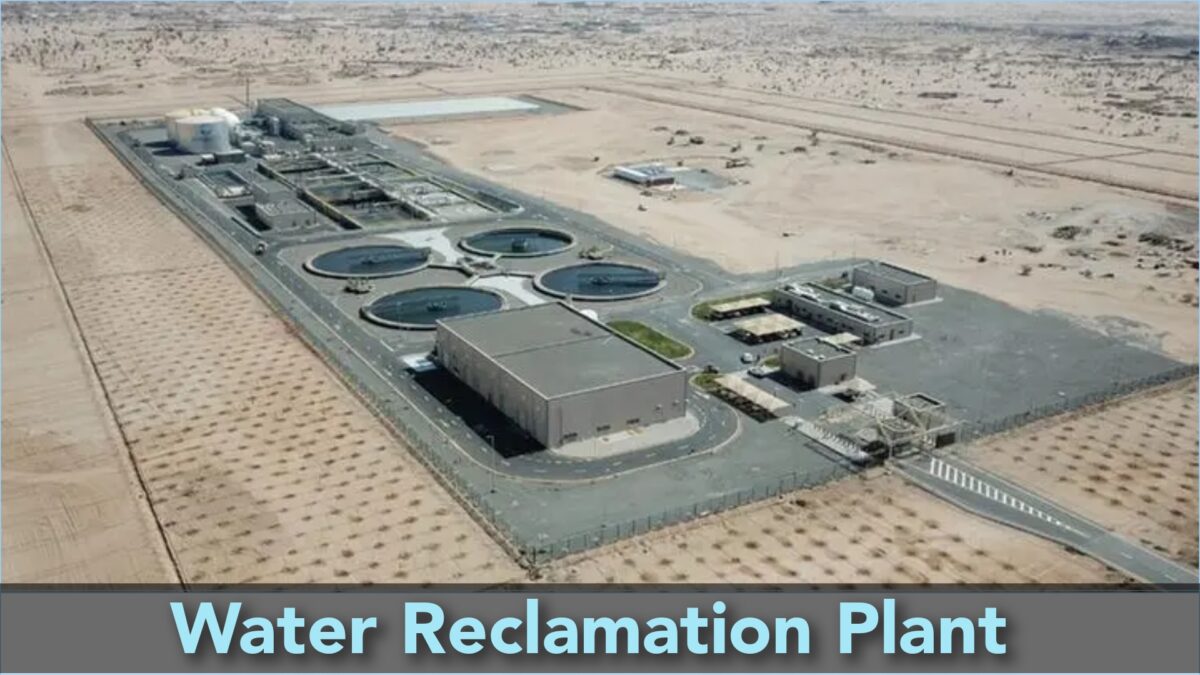Water reclamation also called as water reuse or water recycling.

Table of Contents
What Is Water Reclamation?
Water reclamation is a process that involves converting municipal or industrial wastewater into reusable water for various purposes, including urban reuse, agricultural reuse, environmental reuse, industrial reuse, planned potable reuse, and de facto wastewater reuse.
The process of water reclamation allows water to remain as an alternative source for human activities, thereby reducing scarcity and alleviating pressure on groundwater and other natural water bodies. This is especially important in arid regions where water resources are scarce.
Several technologies, such as ozonation, ultrafiltration, aerobic treatment, forward osmosis, reverse osmosis, and advanced oxidation, are used to treat wastewater for reuse. A combination of these technologies can meet strict treatment standards and ensure that the processed water is free from pathogens.
Reclaimed water can be used for activities such as irrigation, replenishing surface water and groundwater, and fulfilling certain needs in homes, businesses, and industry. It can even be treated to reach drinking water standards, although drinking reclaimed water is not a typical practice.
In many regions of the world where a fresh water supply is plentiful, the cost of reclaimed water can exceed that of potable water. Therefore, the cost of water reclamation options must be compared to the costs of alternative options that achieve similar effects of freshwater savings, such as greywater reuse systems, rainwater harvesting and stormwater recovery, or seawater desalination.
Water reclamation promotes sustainable water use and is an important strategy for managing water resources. By treating and reusing wastewater, we can conserve freshwater resources, reduce pressure on natural water bodies, and support a more resilient water supply for future generations.
Importance Of Water Reclamation
Water reclamation conserves fresh water resources, reducing our reliance on rivers, lakes, and aquifers, particularly in areas with scarce water or drought-prone regions.
Diverting treated wastewater from natural water bodies prevents pollution and contamination of important ecosystems, protecting wildlife and ensuring a healthy environment for future generations.
Reusing water offsets the significant amount of energy required for treating wastewater, reduces the carbon footprint associated with water usage, and decreases the need to transport water over long distances.
Water reclamation provides a reliable source of water for a variety of purposes, even in areas where fresh water is in short supply, ensuring communities have access to safe and reliable water during times of drought or other water shortages, increasing water security.
Water reclamation supports sustainable development by providing a reliable source of water for agriculture, industry, and other uses, promoting economic growth and development without putting additional stress on fresh water resources.
Types Of Water Reclamation
- Urban uses: Water that has been treated or reclaimed can be used for a variety of purposes in cities, such as irrigating public parks and private gardens, cleaning streets, providing fire protection, washing vehicles, flushing toilets, controlling dust, and even for air conditioners.
- Agricultural uses: Reclaimed water can be used for growing food crops that are either processed commercially or not. It can also be used for growing fodder, fiber, seed crops, ornamental flowers, and even for hydroponic culture, aquaculture, greenhouses, orchards, and viticulture.
- Industrial uses: Industries can use reclaimed water for various purposes such as processing, cooling, recirculating cooling towers, washdowns, washing aggregate, making concrete, soil compaction, and controlling dust.
- Recreational uses: Reclaimed water can be used for golf course irrigation, recreational impoundments for activities like fishing, boating, and swimming, aesthetic impoundments without public access, and even for snowmaking.
- Environmental uses: Reclaimed water can be used for various environmental purposes such as aquifer recharge, wetlands, marshes, stream augmentation, wildlife habitat, and silviculture.
- Potable uses: Reclaimed water can also be treated to meet drinking water quality standards and can be used for aquifer recharge for drinking water, augmenting surface drinking water supplies, and even for treating water until it is safe for drinking.
Advantages Of Water Reclamation
- Water reclamation reduces reliance on freshwater sources and minimizes the need to discharge wastewater into the environment, promoting sustainability.
- Reusing water conserves water resources, protects against water shortages, and promotes resource conservation.
- Water reclamation is often less expensive than building new water supply infrastructure, providing a cost-effective solution.
- Reusing water requires less energy than treating and transporting water from distant sources, reducing energy consumption.
- Reusing water reduces the discharge of wastewater into the environment, which can contribute to pollution of rivers and oceans, reducing pollution.
- Water reclamation can improve water quality by removing contaminants and pollutants from the water, improving water quality.
- Reusing water can increase water supply, particularly in areas where freshwater resources are scarce, providing an increased water supply.
- Water reclamation can help mitigate the effects of drought by providing a reliable source of water, contributing to drought mitigation.
- Reclaimed water can be used for agricultural irrigation, reducing the reliance on freshwater sources and promoting sustainable agriculture, benefiting agriculture.
- Reclaimed water can be used for recreational purposes, such as irrigation of parks, golf courses, and other green spaces, providing recreational benefits.
